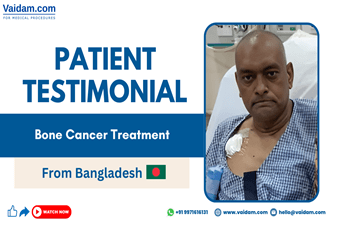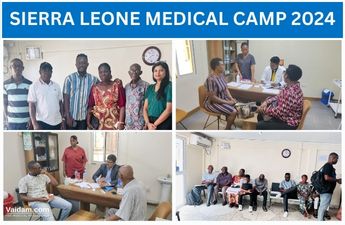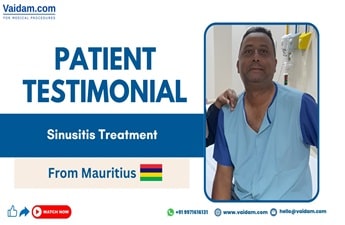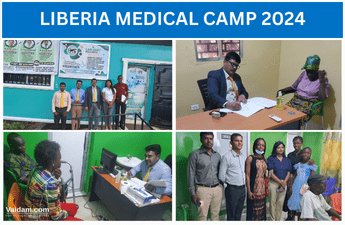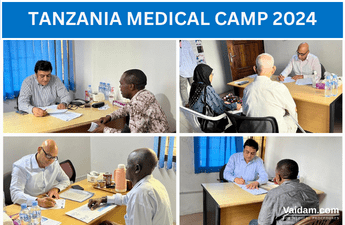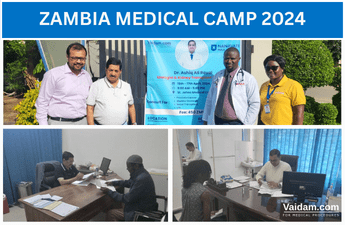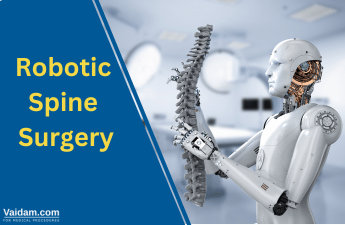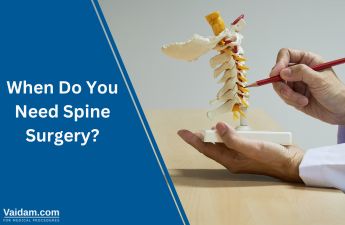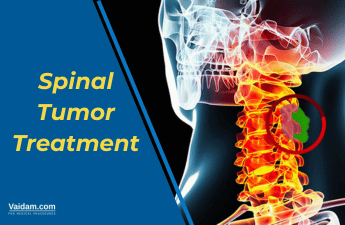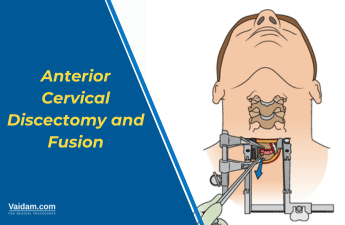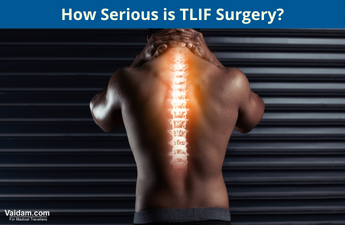
Undergoing spinal surgery was a big deal in earlier times. People opted to suffer from pain rather than treat the condition with surgery. Spine surgeries were risky back in the day and had low success rates. But with the advancements in medical technology and innovative surgical techniques, spinal surgeries have improved a lot.
If you suffer from pain, altered sensation, and muscle weakness, these could be a sign of nerve compression. Spinal decompression surgery is the procedure done to correct nerve compression.
Through this blog, we will help you get a brief understanding of the procedure, its type, and its risks.
Get in Touch with Medical Experts
What is Spinal Decompression Surgery?
Spinal decompression is a surgical technique that helps relieve the symptoms of nerve compression. As the name suggests, it decompresses the spinal cord by opening the bony canals through which the nerves pass.
Spinal decompression surgery is done to treat various medical conditions such as:
- Spinal Stenosis is a condition in which a section of the spinal column narrows, putting pressure on the nerves.
- Slip Disc and Sciatica occur when a damaged or bulging disc puts pressure on an underlying nerve. Pain runs from the lower back to both legs if the sciatic nerve gets pressed.
- Spinal Injuries: A fracture of the spine, trauma to the spine, or tissue swelling can also lead to nerve compression.
- Metastatic Spinal Cord Compression: Spinal cord cancer or tumors in the spinal region can also press the spinal cord or the nerves.
Spinal decompression surgery can be performed on any spine region, from the lower back (lumbar spine) to the neck (cervical spine).
What are the Different Types of Spinal Decompression Surgery?
Types of spinal decompression surgery include laminectomy, laminotomy, foraminotomy, and discectomy. Each surgery works on the basic principle of modifying or removing the bone, spinal disc, or soft tissues compressing the nerves.
- Laminectomy is a surgery to create space by removing one or more vertebrae from the lamina. This increases the size of the spinal column and helps relieve the pressure from the nerves.
- Laminotomy: Only a tiny portion of the lamina (bony roof over the spinal canal) is removed to decompress one side of the canal. The benefit of laminotomy is that it does not disturb the natural support of the lamina, keeping the spine stable.
- Foraminotomy: The neural foramen is the part of the spine from where the nerves exit the spine. Degeneration of the disc decreases the height of the foramen, leading to nerve pinching. Foraminotomy is a spinal decompression surgery that involves removing the bone around the neural foramen.
- Discectomy: This is done by removing a part of the degenerating or bulging disc to relieve pressure on the nerves.
Whom to Trust for a Spinal Decompression Surgery?
Spine surgeons do spinal decompression surgeries. Orthopedic doctors who have done special training in spine surgery are the ones who perform spinal decompression.
You must select the best surgeon for spinal decompression surgery as it is a complex procedure. Spine surgeons in India, Germany, Thailand, Turkey, and the UAE are highly skilled in performing all kinds of spine surgeries, including spinal decompression.
Spinal decompression is usually the last resort for people suffering from nerve compression and cannot improve with physical therapy and medicines.
How is Spinal Decompression Surgery Performed?

Spinal decompression surgery is a 1 to 3-hour-long procedure and involves the following steps:
- Preparing the patient: Once you enter the operation theater, the surgeon will make you lie on the operative table, and the anesthesiologist will give you general anesthesia. The surgeon will then clean and prepare the area where they will make the incision.
- Making the incision: The surgeon makes an incision over the vertebrae, which is to be treated. The incision length depends on the number of laminectomies to be performed. The muscles in the back are split and moved aside to expose the lamina.
- Removal of lamina: After exposing the bone, the surgeon verifies the bone using an X-ray. The surgeon will then perform a laminectomy or laminotomy. In laminectomy, the surgeon removes the complete bony lamina using a drill. Whereas in laminotomy, only a tiny portion of the lamina is removed.
- Decompression of the spinal cord: The dura mater (protective covering of the spinal cord) is visible after removing the lamina. The surgeon then gently retracts the dura mater to remove thickened ligaments and bony spurs.
- Decompressing the nerves: More room can be given to the nerves by cutting/trimming the facet bones. Foraminotomy and discectomy also help in relieving nerve pressure.
- Fusion: A fusion surgery doesn't need to be performed after every spinal nerve decompression surgery. Having a laminectomy on multiple vertebrates can cause spinal instability. The surgeon uses a bone graft between two vertebrates to strengthen the spine, which fuses with them to become one strong bone.
- Closing the incision: Once the surgeon corrects the nerve compression, they will remove the retractors, allowing the muscles to fall back into their place. The muscles and the skin are then sutured or stapled.
What Happens After a Spinal Decompression Surgery?
After the spinal decompression surgery, you'll be taken to the recovery room. A nurse will constantly monitor your blood pressure, heart rate, and respiratory rate. You might be taken to an ICU for the first 24 hours, and if no complication occurs, you'll be shifted to the regular ward.
You'll be released from the hospital in two to three days, with some homecare instructions to be followed.
Some of the restrictions you need to adhere to are:
- Avoid bending
- Don't lift weights heavier than 3 kg
- Avoid smoking and drinking
- Don't drive for the first 2-3 days
- Avoid strenuous activities like yard work or sex
You'll need to take special care of the incision site, which includes gently washing it with mild soap and pat drying it. Do not use lotions or creams over it. Avoid going to the pool with stitches or staples.
You must take your medications on time for a quicker and smoother recovery. You might be given narcotic medicines for pain management. Drink plenty of water and consume a fiber-rich diet to avoid constipation (a side effect of narcotics).
What is the Cost of Spinal Decompression Surgery?
Compared to other developed nations, India offers affordable spinal surgeries. The cost of spinal decompression surgery in India ranges from 2 to 4 lakhs. International patients can expect this cost between USD 2,500 to 5,000.
The cost of spinal decompression surgery in various other countries is given below.
| Country | Germany | Thailand | Turkey |
| Spinal Decompression Surgery |
What are the Risks of Undergoing Spinal Decompression Surgery?
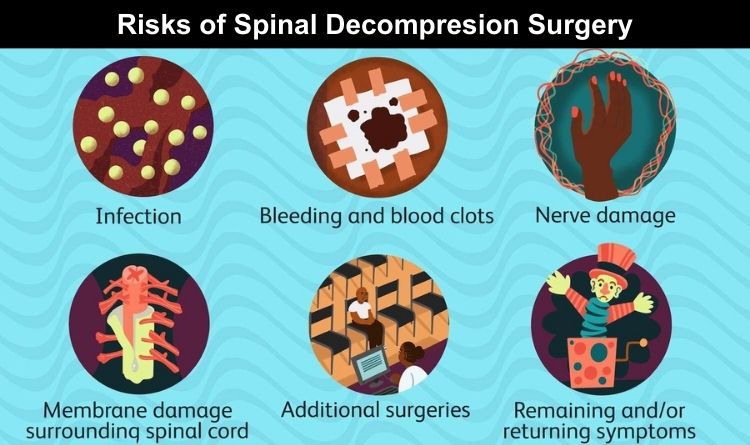
Every surgery carries the ordinary risks of infection, bleeding, reaction to anesthesia, and blood clots. Risks specifically associated with spinal decompression surgery include:
- Nerve damage and persistent pain: Spine surgery can damage the spinal cord and nerves. While performing the surgery, human error can occur, damaging the nerve. This often causes symptoms like numbness and nerve pain. If the damage is significant, it can even cause paralysis.
- Failure of vertebrae fusion: Common causes for vertebrae failing to fuse include smoking, alcohol consumption, obesity, malnutrition, and osteoporosis. The growth of bone gets severely hampered due to nicotine, making smoking the most significant risk factor for failing the fusion.
- Deep vein thrombosis: DVT or deep vein thrombosis is a serious complication of spinal decompression surgery. It is marked by the formation of blood clots in the lower limb's veins. DVT is preventable by using pulsatile stockings and medications like aspirin.
- Fracture of the hardware: Hardware are the screws, plates, and rods that might be used in the fusion surgery. This hardware may break or lose before the bones get entirely fused.
- Bone graft migration: Although rare, the bone graft can shift from the correct position soon after the surgery. The chances of bone graft migration increase if the surgeon does not use screws and plates to stabilize the graft or if multiple vertebrates are fused.
The Bottom Line
Spinal decompression is a common spine surgery involving procedures like laminectomy, laminotomy, discectomy, and foraminotomy. The surgery benefits people who suffer from nerve compression and is not treatable with medications and physical therapy. Spinal decompression surgery offers various benefits, like relief from pain and numbness and improved muscle strength.


